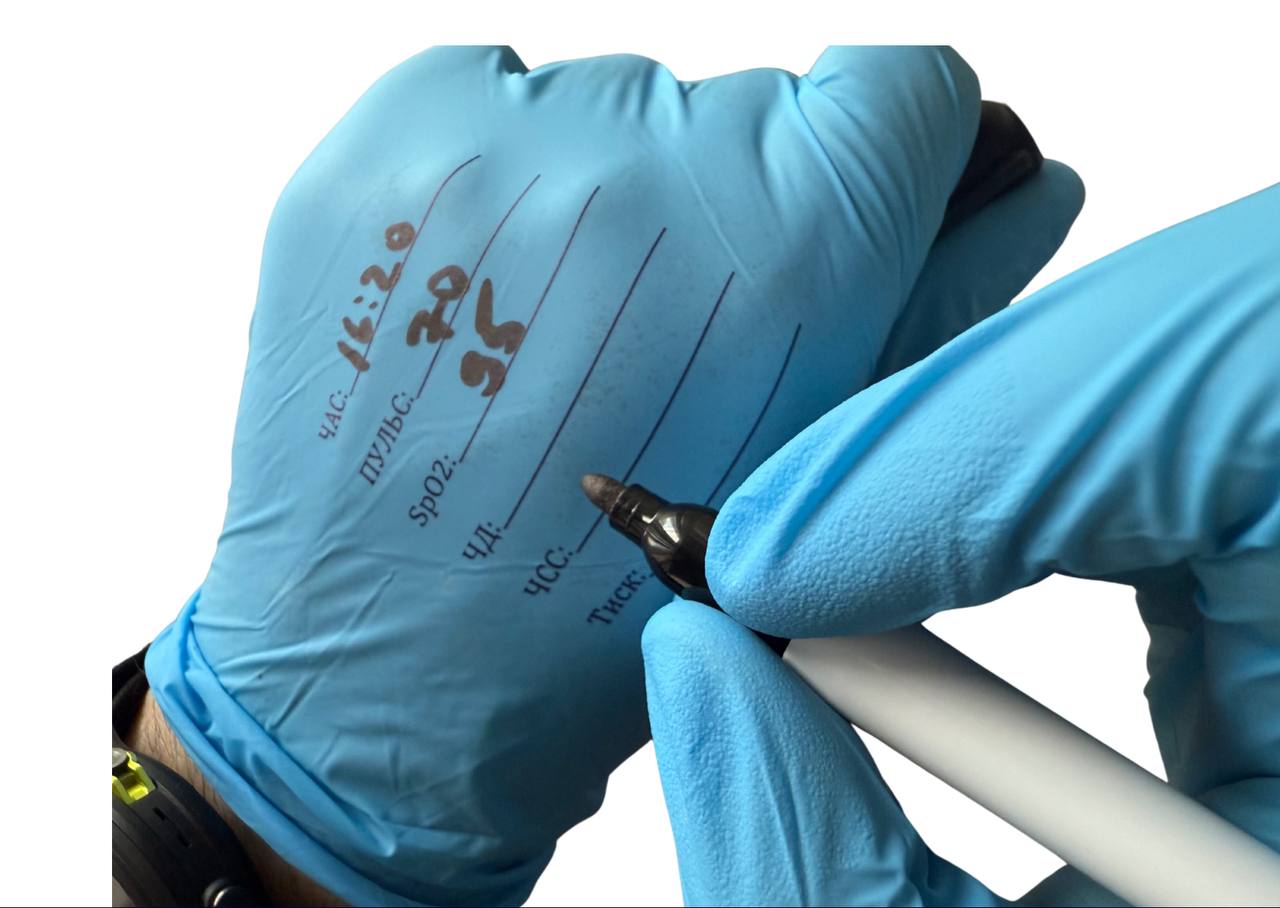Gloves: Types, Selection Tips, and Application Features
Gloves are an essential element of any kit — whether medical, tactical, or universal. Tactical gloves are indispensable in field conditions, while medical ones are used when providing aid to victims. First aid gloves should combine both functions. Nitrile gloves are a popular all-purpose option.
Tactical Gloves: What You Need to Know
Tactical gloves are specifically designed to provide protection, reliable grip, and comfort during high-risk activities. They are widely used by the military, police, rescue workers, and anyone who needs dependable hand protection from cuts, abrasions, impacts, or contamination. To maintain control of equipment or weapons while keeping the skin protected, it’s important to choose durable and comfortable tactical gloves.
These gloves typically feature reinforced padding on the back of the hand, impact-resistant inserts on the knuckles, special finger elements, and textured palm surfaces for improved grip. They are made from synthetic fibers and composite materials to enhance durability and comfort.
Features of Medical Gloves
Medical gloves are extensively used by doctors, nurses, and healthcare personnel of all levels. They protect the hands from infections, contaminants, and biological fluids, ensuring hygiene during medical procedures. It’s essential that these gloves are thin and sensitive yet durable and resistant to punctures and tears.
Sterile gloves are required for surgical procedures, while non-sterile ones are suitable for examinations and auxiliary tasks. The key characteristics of medical gloves are thickness and tensile strength.
Which Gloves to Choose for First Aid
A practical compromise between tactical and medical gloves are first aid gloves. They should be strong enough for field conditions while remaining thin enough for precise manipulation with instruments, needles, or dressings.
Nitrile gloves are the most common choice in first aid kits. They are latex-free, resistant to chemicals and abrasion, and non-allergenic. Made from synthetic rubber, they are stronger than latex gloves. Nitrile gloves resist punctures, cuts, and chemical exposure, providing a high level of barrier protection. They can be used not only in medicine but also in laboratories, the pharmaceutical industry, and even in combat environments.
Among their advantages are latex-free composition, high resistance to chemical and mechanical damage, excellent fit, and sensitivity. Another benefit is their affordable price, especially when purchased in bulk.
How to Choose the Right Gloves
When choosing gloves, pay close attention to the material. The most common types are latex, nitrile, and vinyl — each with its pros and cons.
Make sure to select the correct size: gloves should fit snugly without restricting movement. Material thickness also matters — thinner gloves offer better sensitivity but are less resistant to damage. Some models feature textured fingertips or palms to improve grip on tools.
Always buy certified products — this ensures that the gloves meet the stated specifications and won’t fail at a critical moment.
Using Gloves for First Aid
When providing first aid, gloves are an indispensable part of the process. They are essential when treating wounds, stopping bleeding, and applying bandages. In field or emergency situations, such gloves must be included in every first aid kit.
When additional protection from cuts is needed, tactical gloves can be worn over medical ones.
Gloves are considered consumable items and do not require special storage conditions. Keep them in a cool, dry place away from direct sunlight. If the gloves come in sealed packaging, store them unopened until use.
Gloves — Frequently Asked Questions
Why are medical gloves important in tactical medicine?
They protect rescuers from infections and direct contact with blood while maintaining sterility during medical procedures.
What types of gloves are available at TacMed?
The catalog includes nitrile and latex gloves in various sizes, offering strength, flexibility, and comfort.
Can tactical gloves be used in everyday situations?
Yes, they are useful not only in medical practice but also in daily life — for wound care, hygiene, or general protection.



